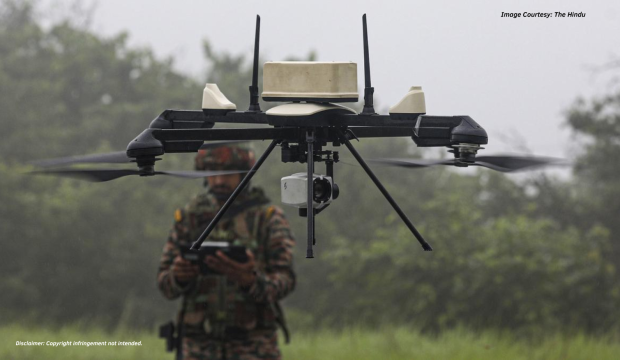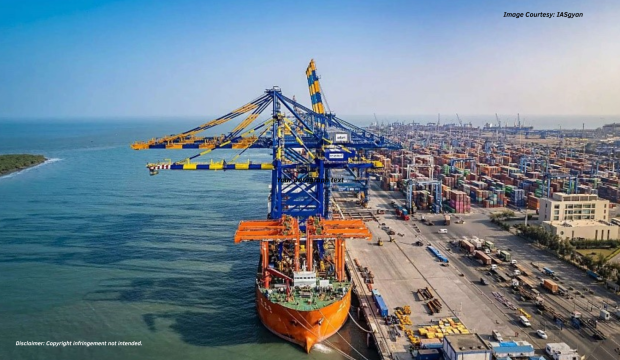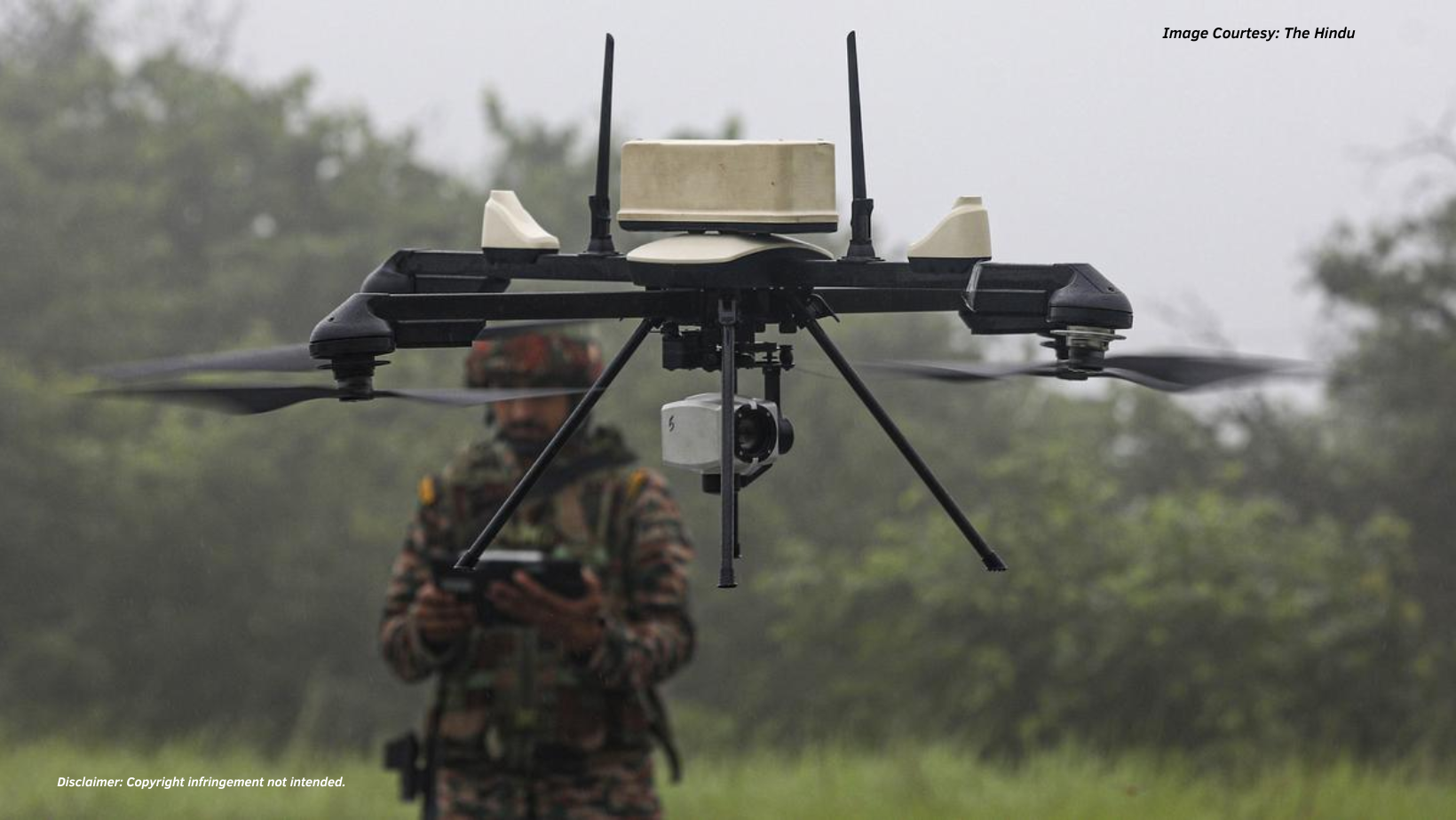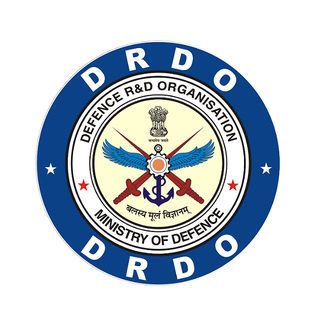Introduction
Climate Challenges of Vital Maritime Spaces
Rising sea levels, tropical cyclones, and altering ocean currents have emerged as serious challenges, reflecting current conditions that affects New Delhi’s maritime approaches.10 According to the reports of the Hindu and Down to Earth, the Indian Ocean (1950-2020) had risen in temperature by 1.2°C and climate forecasting systems predict it to continue to warm further 1.7°C-3.8°C by 2020 to 210011 12. This immediate rise in temperature elevates the frequency and extent of severe cyclones, evidently noticed in Cyclone Amphan (2020), which led to over $14 billion in financial losses in India13; US$130 million in Bangladesh, impacting millions of people across India, Bangladesh and Myanmar.14
Also, at the same time, small island countries of the Pacific Ocean, like Fiji and Tuvalu, will be impacted by at least 6 inches (15 centimetres) of increasing sea levels following 30 years, according to NASA in the year 2024, putting at danger the very existence of these littoral countries.15 Meanwhile in South-West Pacific region, ocean warming has increased more than three times as fast as the average global rate, placing critical marine habitats and communities at vulnerable position. 16 Collectively, these cases highlight that climate challenges are inextricably tied to geostrategic realities.
Climate Risk and Maritime Security
Climate vulnerabilities in the present era have evolved into a ‘threat multiplier’,17 intensifying ongoing disputes, such as resource competition and geopolitical instability18, incorporating additional layers of challenges to the military infrastructure and operations.19 Above cases from Indo-Pacific region showcases that environmental dangers are no more minor problems, instead fundamental factors that influence maritime strategies in execution plans, planning, and collective regional efforts across a region. These four spheres hold urgent importance:
1.Operational Disruption
Climate change is eventually affecting maritime operations across Indo-Pacific. Unpredictable and severe weather conditions, ranging from devastating cyclones to typhoons, disrupt global shipping; 20 military infrastructure; capabilities and assets; 21 which escalate maintenance requirements on ships and bases.22 According to the reports of the Ministry of Defence, the Indian Navy operations during Cyclone Remal (2024)23 had carried out “comprehensive preparatory actions being undertaken”, 24 which impacted its patrol routines and operational capacity. These climatic instance in the IOR not only threatens the conventional naval approaches of the established maritime order, but also insists on a strategic revaluation of naval potential and capabilities, as volatile nature of climatic conditions undermines the confidence on which maritime dominance is established, requiring that defence forces should include climate policies into naval framework rather than focusing solely on traditional strategies.
2. Island Infrastructure Threats
The Lakshadweep and Andaman island confronts serious ecological threats such as, increasing rise of sea levels and coastal erosion due to global warming, negative consequences on coral reefs from ocean warming and acidification.2526 Crucial naval bases from strategic standpoint: Port Blair, Car Nicobar, and Minicoy, are increasingly exposed to oceanic inundations, which negatively affect the islands’ fragile ecological zones and leads to shortage of freshwater, having repercussions for both forces and civilians.27 28 According to IPCC 6th Assessment Report, it is highlighted that by 2050, the expected inundation can amount to further 5-10 cm, which may result in doubling the flooding frequency in the IOR and Tropical Pacific, affecting the existence of the littoral nations of the Indo-Pacific region. 29 Safeguarding these critical hubs against climate-induced threats is not solely a developmental issue, but also significant to ensuring continuity of presence and leverage across the Indo-Pacific region.
3.Fisheries & Food Security
According to reports, the Indian Ocean accounts for 15% of the globe’s marine capture fisheries 30 and 40% comes from the Pacific Ocean31. But due to rising sea temperatures and acidification, the structure of marine ecosystems are altering, as fish stocks are relocating towards colder waters.32 In the Pacific Ocean, tuna migration towards the east has caused a major economic concern for many island states of the Pacific Ocean, like Solomon Islands, Fiji and Papua New Guinea, which depend heavily on fishing and cultivation, anticipated to drop by ten to thirty per cent by 2025, causing a financial blow of up to US $140 million yearly for these nations.33 In the BoB, hilsa migration patterns due to climate change are changing, posing severe hardships for fishing communities in India and Bangladesh, accelerating the surge of illegal, unreported, and unregulated (IUU) fishing. 34 These climate threats in fishery grounds have further aggravated regional fishery contestation among different coastal regions of the world (East China Sea, North-East Atlantic, Coast of West Africa and Arctic), highlighting the risk of ‘fishery conflict’ in already highly disputed waters.35 India is the second-largest fish-producing nation, contributing nearly eight per cent to global fish production,36 with direct employment to nearly 14.5 million people.37 However, warming sea temperature which disrupt their habitat, forces fish to migrate, leading to falling fish stocks in the marine spaces like BoB and the Arabian Sea, which are a crucial exporter of fish and other seafood products to different regions of the world. This impact negatively – to the livelihood of the coastal fishing communities, decline in export incomes and threatens the cycle of food security.38
4.Disaster Response Load
HADR missions have emerged as a core objective for Indo-Pacific navies. The rate and extent of HADR missions have increased in numbers, overextending naval assets even during periods of non-conflict. Between 2014 and 2024, the Indian Navy undertook numerous HADR missions in the IOR39, from the Operation Samudra Maitri (2018) in Indonesia, deploying Indian Navy ships after the 7.5 magnitude earthquake 40 to Operation Karuna (2023) in Myanmar in the context of Cyclone Mocha, the strongest in the BoB in the last decade41. Although these missions enhance New Delhi’s soft power, they exhaust naval resources, restricting assets to relief-oriented roles and risking overextension. This ‘climate drag’ poses a peril of overextending New Delhi’s maritime capacity at a time when geostrategic contestation in the Indo-Pacific is becoming increasingly acute. This underlines the necessity for risk-informed governance and regional collaboration, linking climate change into operational planning and joint multinational exercises, to ensure both adaptability and operational readiness.
Why India Needs a Climate-Security Strategy in the Indo-Pacific
In the Anthropocene era, climate change presents a structural threat to maritime order, causing ambiguity in the accepted framework of security paradigms, governance mechanisms, and alliance collaborations. The Indo-Pacific region hosts more than 60% of the international shipping traffic,42 and the Arabian Sea, together with the Bay of Bengal, make up the majority of India’s maritime trade volume. The Bob region and the Arabian Sea shape India’s twin maritime frontiers, securing trade, energy and naval power. The greater part of India’s oil imports and over 95 per cent of its international trade by volume pass through these waters, establishing them as vital commercial pathways.43 Additionally, in geographical terms, they connect India to the Gulf, East Africa, and Europe to the west 44 and to East and Southeast Asia to the east, strengthening its geostrategic influence.45
However, recent report findings from various international and regional organizations highlight how the maritime space, which ensures the continuity of India’s commercial trade and connectivity, is, in parallel, emerging as an area of climate vulnerability and insecurity. For instance, the Bay of Bengal (BoB) ocean basin has been categorized by the NASA Centre for Climate Stimulation as “notorious for generating devastating tropical cyclones”46 ; “Bay of Bengal cyclones are among the most destructive natural events and have created humanitarian crises multiple times”,47while sea levels around the North Indian Ocean were recorded at a rate of 3.3 mm per year (1993-2017). 48 Meanwhile, the Ministry of Earth Sciences (MoES) published ‘Assessment of Climate Change over the Indian Region’ in 2020, which highlights that severe cyclonic storms over the Arabian Sea have increased during the post-monsoon seasons of 1998-2018. 49 Climate risks in this maritime space thus destabilize not only coastal security and resilience but also New Delhi’s geopolitical landscape and geostrategic terrain in the Indo-Pacific region.
While it should be noted that India’s Indo-Pacific Oceans Initiative (IPOI) (2019) already acknowledges climate change, its significant pillars, such as Maritime Ecology, Disaster Risk Reduction and Management, and Marine Resources, have increasingly discussed environmental concerns in the Indo-Pacific region over time. 50 Yet, their actions remain divided and incoherent due to their non-treaty-based, voluntary arrangement. At the same time, the UN also initiated the Climate Security Mechanism (CSM), which has been operating since 2018 following increasing demands from those directly affected, member states, and epistemic communities to engage with the interrelation between climate change, peace, and the global security framework.51 This approach is notably applicable in the case of New Delhi, particularly for climate-forced displacement from the BoB coastal regions, such as those in countries like Bangladesh, which already have implications for border control and internal stability. 52 Sea level rise and heightened cyclone-related risks are setting off fresh waves of ‘environmental refugees’, exhausting resources and intensifying societal-political challenges53. Although the CSM initiative has been highly debated in the UN Security Council (UNSC) and the UN General Assembly (UNGA), the discussion remains primarily idealistic and symbolic in nature. If India seeks to project itself as the advocate of the Global South and materialize its vision of ‘Vishwamitra’, a friend of the world, New Delhi have to strengthen its voice in, ‘climate justice’ within these global forums.
By integrating climatic dimensions into maritime doctrine, regional governance architecture, and organizational frameworks, New Delhi can both secure its own maritime boundaries and influence global climate – security discourse, in a manner that mirrors regional dynamics. This framework enables the shift of environmental challenges into capabilities for responsive governance, allowing for coordinated planning across areas of operations, infrastructure, and governance norms.
Opportunities for Regional Cooperation
If climate change becomes the cause of disruption for the maritime commons, it simultaneously creates a diplomatic space of exposure, a shared domain where environmental interdependence drives collaboration despite political differences. For New Delhi, this period is not just about showcasing its maritime strength, but also about positioning itself as a regional supporter of climate-related resilience. While most often, climate threats are referred and discussed intensively in multilateral organizations like Indian Ocean Rim Association (IORA), BIMSTEC (Joint Working Group on Environment and Climate Change) (JWG-ECC), and the Quad Climate Working Group (CWG), in the context of Indo-Pacific region, there’s a recognized need to develop and adopt more robust adaptation and mitigation approaches in India’s maritime approach towards the climate risk. For New Delhi, the issue lies in transforming climate risks into forums for cooperative action, where environmental vulnerability evolves into the basis for political trust and functional coherence. Shaping such arrangements necessitates transcending temporary disaster measures to institutionalized practices that combine resilience and security measures. In light of this, three roadmaps exist through which New Delhi can integrate climate resilience planning into Indo-Pacific cooperation:
1.Humanitarian Assistance and Disaster Relief (HADR) as Strategic Diplomacy
Although climate-induced disasters are gradually overextending New Delhi’s maritime assets, they also contribute to the most prominent platform for regional collaboration and cooperation in the Indo-Pacific. India has cultivated a respected record in this sphere, as demonstrated by its leadership in the 2004 Indian Ocean tsunami relief efforts, joint emergency operations during Operation Karuna following Cyclone Mocha in Myanmar (2023), the Maldives Water Crisis (2014), and more recently, Operation Brahma in Myanmar (2025). Through regional and international organizations like the QUAD (Quad Partnership on Humanitarian Assistance and Disaster Relief (HADR) in the Indo-Pacific), BIMSTEC (BIMSTEC Disaster Management Exercise), and IORA (Disaster Risk Management), New Delhi has proactively established joint disaster response initiatives.
Within the Indo-Pacific context, New Delhi’s HADR role is strengthened through its affiliation with the Quad. In 2022, the Quad introduced specific directives for HADR, aimed at enhancing cooperation and integration during regional upheavals. 54 New Delhi has further expanded its assistance, transcending the IOR region to the Pacific. For example, as part of the Forum for India–Pacific Islands Cooperation (FIPIC), India provided USD 500,000 in initial assistance to Vanuatu in January 2025 following a severe earthquake. This move underscored its solidarity with Pacific Island countries. 55 Such measures add to India’s IPOI efforts, where support to Pacific allies serves as a core pillar.
Additionally, HADR operations and missions can evolve into a tool of geopolitical and normative diplomatic influence. By staging assistance materials and relief housing units in advance in major maritime hubs, particularly in the Andaman and Nicobar Islands, New Delhi can not only facilitate speedy operational actions but also establish an institutionalized trust framework across naval neighbours. In COP 28, Union Minister for Environment, Forest and Climate Change, Shri Bhupender Yadav 56 stated that “India’s contribution to climate action has been significant through its international efforts such as International Solar Alliance (ISA), Coalition for Disaster Resilient Infrastructure (CDRI), creation of LeadIT, Infrastructure for Resilient Island States (IRIS) and the Big Cat Alliance”57, which carries symbolic significance about its responsibilities.
2.Maritime Domain Awareness (MDA) as Climate Intelligence Infrastructure
Conventional MDA arrangements often concentrate on “the effective understanding of any activity associated with the maritime environment that could impact upon the security, safety, economy or environment”. 58 However, climate threats, from severe cyclones to coral bleaching, are gradually transforming maritime operational space. Even India’s MDA, an all-encompassing initiative to comprehend and oversee all maritime activities, which explicitly includes the Indo-Pacific region, focusing on both traditional and non-traditional maritime threats needs a more inclusive outlook of MDA. 59 While New Delhi has not yet fully integrated climate challenges into its MDA conceptualization, its organizational instruments, such as the Information Fusion Centre–Indian Ocean Region (IFC-IOR) and its engagement in the Quad’s Indo-Pacific Partnership for Maritime Domain Awareness (IPMDA), present actionable opportunities.
By integrating climate intelligence, severe storm forecasting, ocean risk monitoring, and marine species migration into these international and regional forums, New Delhi could translate MDA into an instrument of forward-looking governance. Coordinating IFC-IOR’s organizational capacities with corresponding frameworks, such as the Pacific Fusion Centre, can establish a trans-oceanic framework where geophysical information may provide direct input to global strategic choices. Significantly, such incorporation is not only technological; it would not only reinforce security and stability in the Indo-Pacific region but also locate New Delhi as an epistemic actor framing climate-induced security linkage without explicitly framing climate change in terms of security.
3.Capacity Building as Resilience and Interdependence
Conclusion
Climate change is presently leading the way, reshaping maritime security and regional cooperation mechanisms in the Indo-Pacific region. For India, to safeguards its regional interests across the IOR and broader Indo-Pacific region it is significant for the nation to overcome these ecological upheavals which affects its maritime policies and incorporate climate intelligence, capacity building and adaptation-oriented mechanism in its naval strategies. This approach can reshape New Delhi as a norm-shaper, steering the way, for Indo-Pacific region to coordinate in response to climate-related maritime hazards while protecting its own geostrategic and economic interests.
DISCLAIMER
The paper is author’s individual scholastic articulation and does not necessarily reflect the views of CENJOWS. The author certifies that the article is original in content, unpublished and it has not been submitted for publication/ web upload elsewhere and that the facts and figures quoted are duly referenced, as needed and are believed to be correct.
References
JAIN, VAISHALI, and SOMVIR GILL. “Combating Climate Change in the Indo-Pacific Region.” Journal of Polity & Society 16, no. 1 (2020): 25–44.
Söder, Rickard, Dr Malin Mobjörk, and Dr Eva Lövbrand. “The Anthropocene and Global Politics: Rewriting the Earth as Political Space.” STOCKHOLM INTERNATIONAL PEACE RESEARCH INSTITUTE, September 2, 2020.
JAIN, VAISHALI, and SOMVIR GILL. “Combating Climate Change in the Indo-Pacific Region.” Journal of Polity & Society 16, no. 1 (2020): 25–44.
Security Council, United Nations. “SECURITY COUNCIL HOLDS FIRST-EVER DEBATE ON IMPACT OF CLIMATE CHANGE ON PEACE, SECURITY, HEARING OVER 50 SPEAKERS.” Press release, April 17, 2007.
Wik, Trine Marielle, and Andrew W. Neal. “The Prioritisation of Climate Security: A Content Analysis of National Security Agendas.” Environment and Security 3, no. 1 (September 10, 2024): 33–71.
Rasheed, Athaulla A. “Small Island Developing States and Climate Securitisation in International Politics: Towards a Comprehensive Conception.” Island Studies Journal 18, no. 1 (2023): 161–85.
Ullah, Sufian, and Zeeshan Hayat. “India as a Net Security Provider in Indo-Pacific and Implications for the Region.” NUST Journal of International Peace and Stability 4, no. 1 (January 25, 2021): 26–39.
Dhanasree Jayaram. “Climatizing’ Military Strategy? A Case Study of the Indian Armed Forces.” International Politics 58, no. 4 (May 30, 2020): 619–39.
Ministry of Environment, Forest and Climate Change, Government of India. “India Delivers Statement on Behalf of Like-Minded Developing Countries at the High-Level Ministerial on Climate Finance in COP29 Summit at Baku, Azerbaijan.” Press release, November 15, 2024.
Acharya, Monalisa. “Climate Change and Maritime Security: India’s Growing Concern.” IMPACT AND POLICY RESEARCH INSTITUTE, July 18, 2025.
Akshit Sangomla, “Indian Ocean Is Heating up Much Faster than We Think, at a Rate of 1.7-3.8°C per Century,” Down to Earth, April 29, 2024.
Koshy, Jacob. “Warming of Indian Ocean to Accelerate: IITM Study.” The Hindu, May 2, 2024.
Pti. “Cyclone Amphan of 2020 Resulted in $14 Billion Economic Losses in India: U.N. Report.” The Hindu, April 20, 2021.
Give2Asia. “Report: Cyclone Amphan Relief in Bangladesh (2020).” Give2Asia, May 10, 2022.
Jet Propulsion Laboratory. “NASA Analysis Shows Irreversible Sea Level Rise for Pacific Islands.” Jet Propulsion Laboratory, September 25, 2024.
World Meteorological Organisation. “Climate Change Increases Threats in South West Pacific.” Press release. World Meteorological Organisation, November 10, 2021
International Military Council on Climate and Security. “Climate and Security in the Indo-Asia Pacific,” August 12, 2020
Caballero-Anthony, Mely, and Alistair D. B. Cook. “Understanding Climate Security in the Indo-Pacific.” Third World Quarterly, November 27, 2024, 1–8.
Climate-ADAPT. “Impacts of Climate Change on Defence-Related Critical Energy Infrastructure.” Climate-ADAPT, January 10, 2024.
Allem, Nichole. “5 Ways Severe Weather Disrupts Supply Chains.” Maersk, July 21, 2025.
Da Costa, Ricardo Tavares, Elisabeth Krausmann, and Constantinos Hadjisavvas. “Impacts of Climate Change on Defence-Related Critical Energy Infrastructure.” European Defence Agency. European Commission, Joint Research Centre, European Defence Agency, n.d.
StormGeo. “The Effects of Tropical Cyclones on Shipping.” StormGeo, May 2, 2019.
Ministry of Defence, “INDIAN NAVY’S READINESS FOR CYCLONE REMAL,” Press Information Bureau, Government of India, May 26, 2024.
Ibid
Matsya Havelock. “The Impact of Climate Change on the Andaman Islands,” n.d.
Ghosh, Sahana. “Safeguard Lakshadweep Islands from Future Sea-Level Rise: Study.” Mongabay, June 10, 2021.
Ibid
Bikash Kumar Bhattacharya, “How Climate Change Is Worsening Water Scarcity in the Andaman Islands,” Scroll in, June 19, 2024.
SIXTH ASSESSMENT REPORT. “Climate Change Impacts and Risks.” Intergovernmental Panel on Climate Change, n.d.
SriHari, Murugesan, Pandian Krishnan, Rishi Sharma, Rajdeep Mukherjee, and Elayaperumal Vivekanandan. “Status of Fisheries Management in the Indian Ocean: Key Strategies for Enhancing Sustainability in the Bay of Bengal.” Marine Policy 182 (August 11, 2025): 106865.
The State of World Fisheries and Aquaculture 2022. “TOTAL FISHERIES AND AQUACULTURE PRODUCTION.” Food and Agriculture Organisation of the United Nations, n.d.
Venegas, Roberto M., Jorge Acevedo, and Eric A. Treml. “Three Decades of Ocean Warming Impacts on Marine Ecosystems: A Review and Perspective.” Deep Sea Research Part II Topical Studies in Oceanography 212 (December 2023): 105318.
Pacific Island Times News Staff. “Study: Ocean Warming to Take Its Toll on Pacific Islands’ Tuna Industry.” Pacificislandtimes, February 21, 2025.
Sarkar, Sukanta. “Hilsa Fish: An Endangered Fish Due to Climate Change and Overexploitation.” ASIAN JOURNAL OF ENVIRONMENTAL SCIENCE 12, no. 1 (June 15, 2017): 53–56.
Spijkers, Jessica, Andrew Merrie, Colette CC Wabnitz, Matthew Osborne, Malin Mobjörk, Örjan Bodin, Elizabeth R. Selig et al. “Exploring the future of fishery conflict through narrative scenarios.” One Earth 4, no. 3 (2021): 386-396.
Press Information Bureau, Government of India. “Casting Nets, Catching Success.” Press release, February 15, 2025.
FAO. “Perfiles de Países de Pesca y Acuicultura India.” FAO, n.d.
Goveas, Nikhil, Carlito Turner, and Tanvi Deshpande. “As Earth Gets Hotter, India’s Fisheries Sector Faces Challenges.” Indiaspend, March 24, 2025.
Hangzo, PK Khup. “Humanitarian Assistance and Disaster Relief (HADR): India’s Journey from 2014 to 2024.” Vivekananda International Foundation, June 10, 2024.
Ministry of External Affairs, Government of India. “Operation Samudra Maitri: India’s Assistance to Earthquake and Tsunami Affected Areas in Indonesia,” October 3, 2018.
The Hindu Bureau. “India Launches ‘Operation Karuna’ to Assist Cyclone-Hit Myanmar.” The Hindu, May 18, 2023.
Singh, Tayenjam Priyokumar, Lourembam Japan Singh, and Ningthoujam Koiremba Singh. “India and QUAD in the Indo-Pacific Region: A Perspective on Maritime Security.” Jadavpur Journal of International Relations, 28, no. 2 (May 27, 2025).
Jaishankar, Dhruva. “Indian Ocean Region: A Pivot for India’s Growth.” Brookings, September 12, 2016.
Zreik, Mohamad. “The Maritime Silk Road: Connectivity and Exchange across the Indian Ocean and Arabian Gulf.” Journal of Gulf Studies, July 2, 2025
Naha, Alik. “Geostrategic Significance of the Bay of Bengal in India’s Maritime Security Discourse.” The Journal of Territorial and Maritime Studies 9, no. 2 (January 1, 2022): 47–64.
Cohen, Jarrett. “Exploring Past and Future Tropical Cyclones in the Bay of Bengal with NASA High-End Computing.” NASA Centre for Climate Simulation, February 21, 2024
Ibid
Ministry of Earth Sciences. “Impact of Climate Change upon the Indian Subcontinent.” Press Information Bureau, Government of India, August 2, 2023
Ibid
VAISHALI JAIN and SOMVIR GILL, “Combating Climate Change in the Indo-Pacific Region,” Journal of Polity & Society 16, no. 1 (2024): 25–44.
Climate Security Mechanism. “Climate Security Mechanism (CSM) by the Numbers,” n.d.
Shidore, Sarang. “Climate Security and Instability in the Bay of Bengal Region.” Council on Foreign Relations, April 2023.
Ibid
MEA. “Guidelines for Quad Partnership on Humanitarian Assistance and Disaster Relief (HADR) in the Indo-Pacific.” Ministry of External Affairs, Government of India, September 23, 2022
MEA, “India Announces Immediate Relief Assistance Worth USD 500,000 to Vanuatu in the Wake of Devastating Earthquake,” Ministry of External Affairs, Government of India, January 2, 2025
Ministry of Environment, Forest and Climate Change. “COP 28 NATIONAL STATEMENT by Union Minister for Environment, Forest and Climate Change Shri Bhupender Yadav.” Press Information Bureau, Government of India, December 9, 2023.
Ibid
Das, Captain Himadri. “MARITIME DOMAIN AWARENESS IN INDIA: SHIFTING PARADIGMS.” National Maritime Foundation, September 30, 2021.
Bose, Sohini, and Anasua Basu Ray Chaudhury. “India and a Stable Indo-Pacific: Managing Maritime Security Challenges in the Bay of Bengal.” Observer Research Foundation (ORF), March 27, 2024.
Mitra, Ryan, and Sanskriti Sanghi. “The Small Island States in the Indo-Pacific: Sovereignty Lost?” Asia Pacific Law Review 31, no. 2 (February 28, 2023): 428–50.
Ministry of Home Affairs. “Prime Minister Announces Coalition for Disaster Resilient Infrastructure at UN Climate Action Summit 2019.” Press release, September 24, 2019.
Ministry of External Affairs, Government of India. “Launch of Projects under India UN Global Capacity Building Initiative.” Press release. Ministry of External Affairs, Government of India, August 2, 2025.
BIMSTEC. “4th BIMSTEC Disaster Management Exercise (DMEX).” BIMSTEC, July 15, 2025.
BIMSTEC. “BIMSTEC Centre for Weather and Climate.” BIMSTEC, n.d.
IORA. “Disaster Risk Management.” IORA, n.d.

Bidisha Deka
is a Research Intern at CENJOWS














































